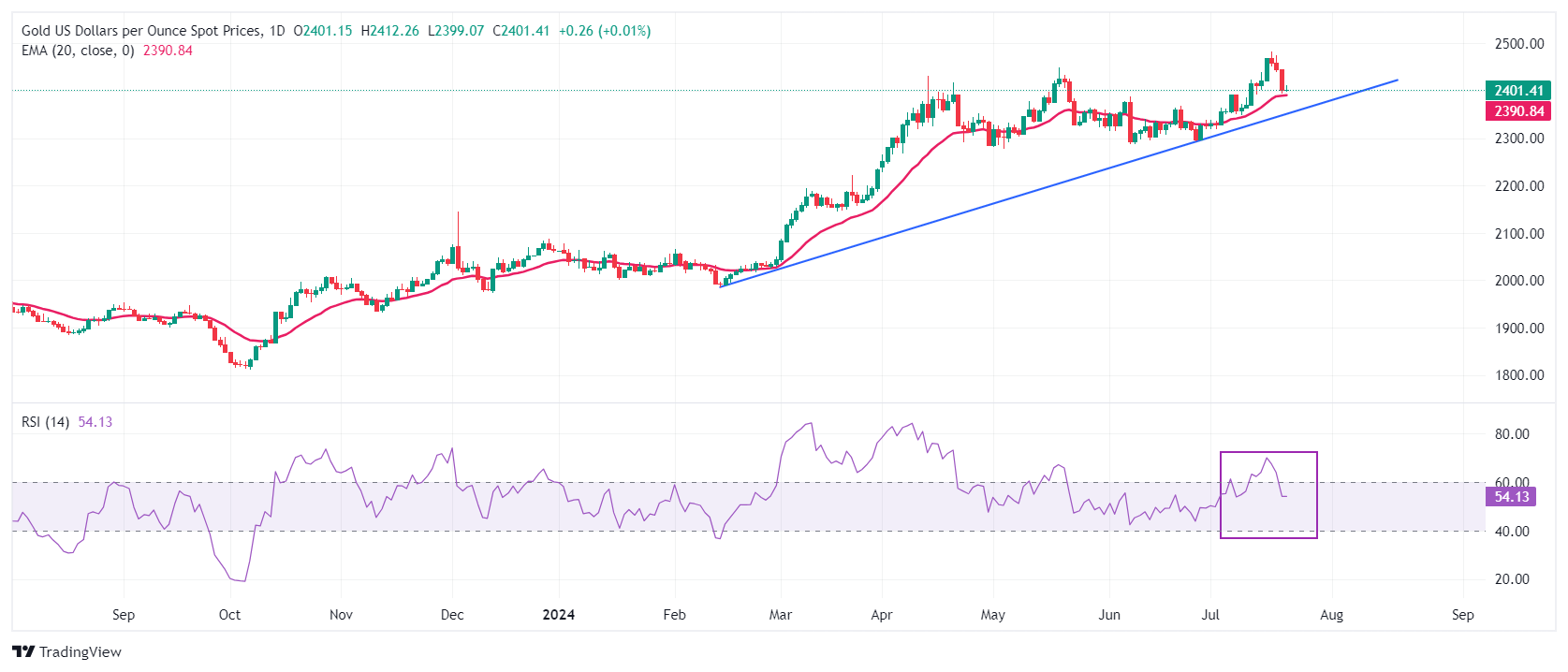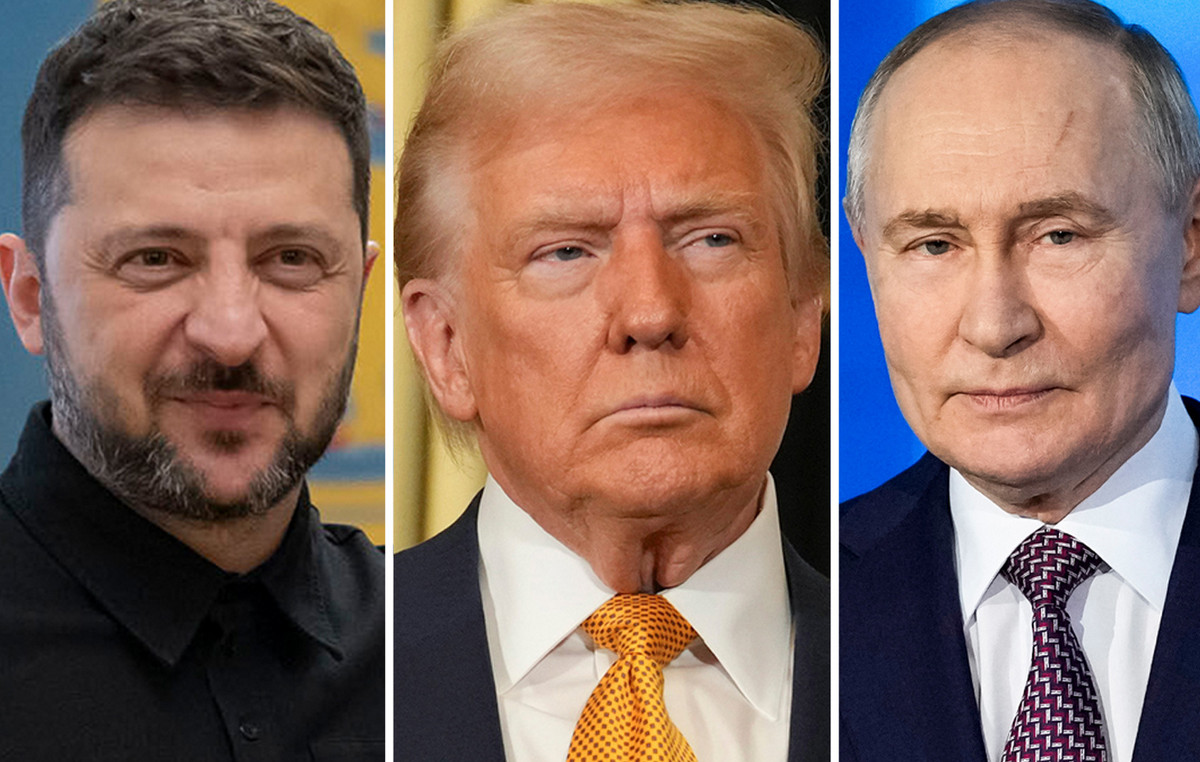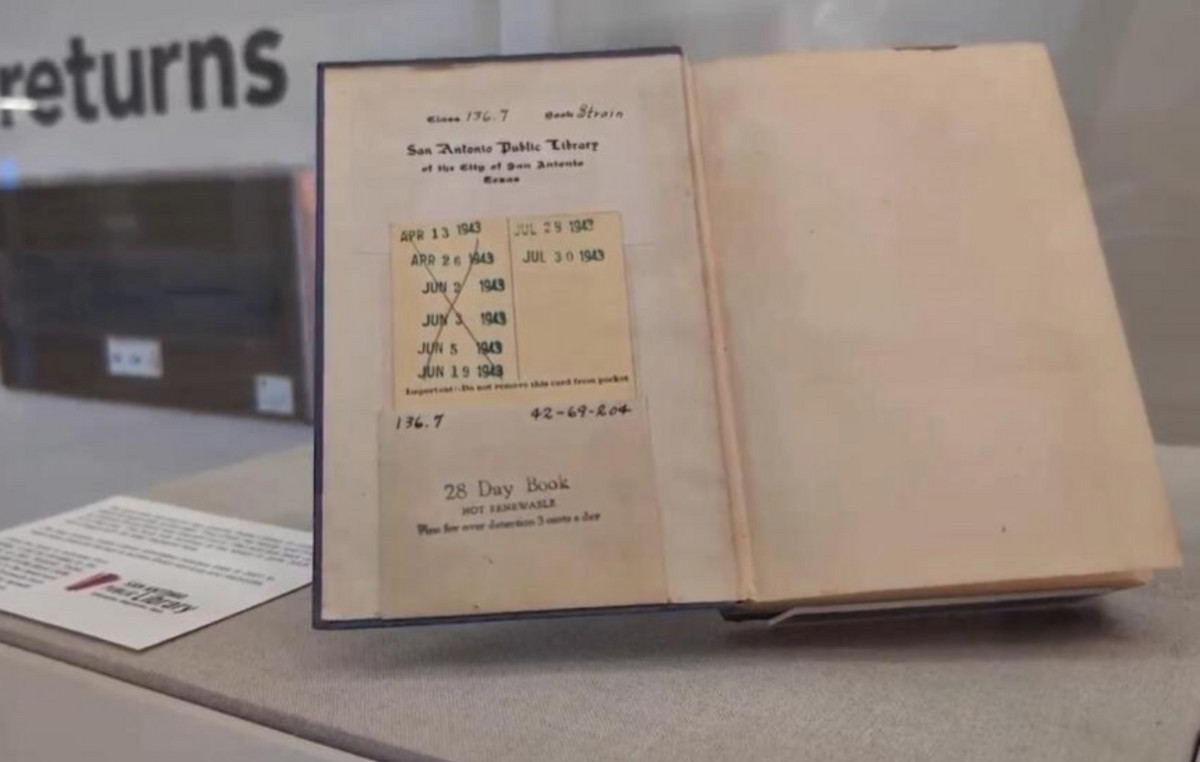- Gold prices rise but remain uncertain amid expectations that Trump will win the US presidential election
- US President Biden withdraws his re-election bid and nominates Kamala Harris to lead the Democrats.
- US Dollar falls ahead of data-packed week in the US
Gold (XAU/USD) price is showing uncertainty near the key support of $2,400 in the European session on Monday. The precious metal remains on edge amid growing speculation that Republicans led by Donald Trump will win the United States (US) presidential election in November.
Market experts see Trump’s victory as favorable for economic growth as he has promised cuts in corporate taxes and interest rates. This has fueled upside risks to consumer inflation expectations. Experts also expect more trade restrictions if Republicans enter the White House. Prospects of Donald Trump winning the election have increased after an assassination attack on him and US President Joe Biden’s withdrawal from the re-election bid have paved the way for Vice President Kamala Harris to be the Democrats’ nominee.
Rising odds of a Trump victory have boosted the US dollar’s appeal. The US Dollar Index (DXY), which tracks the greenback’s value against six major currencies, retreated slightly to 104.20 on Monday after a strong recovery from a four-month low of 103.65.
US 10-year Treasury bond yields fall to 4.22%. Lower yields on interest-bearing assets reduce the opportunity cost of investing in non-yielding assets such as gold.
Daily Market Wrap: Gold prices stabilize ahead of busy week in the US
- Gold price finds temporary support near $2,400 after falling consecutively for three trading days, with the focus on a data-packed week in the US. Economic data will provide fresh clues on when the Federal Reserve (Fed) will start cutting interest rates this year.
- This week, investors will focus on the S&P Global Flash Purchasing Managers’ Index (PMI) for July, the second quarter Gross Domestic Product (GDP), and the Durable Goods Orders and Personal Consumption Expenditures (PCE) Price Index for June. According to estimates, the flash PMI expanded at a slower pace than the previous month. Meanwhile, GDP is expected to expand at a strong pace of 2.0% annualized from the previous release of 1.4%.
- Investors will be focused on core PCE inflation data, which is the Fed’s preferred gauge of inflation. On a monthly basis, the inflation measure is estimated to have grown at a faster pace of 0.2% from the previous reading of 0.1%.
- Financial markets now expect the Fed to begin cutting its key interest rates in September and to make two rate cuts this year versus one projected by policymakers in the latest dot plot.
- Recently, Fed officials’ confidence that inflation is back on track toward 2% has increased. June inflation readings showed price pressures growing at a slower pace than expected. In addition, monthly headline inflation fell for the first time in more than four years.
Technical Analysis: Gold remains around $2,400
Gold price is trading in a tight range near $2,400 on Monday. The precious metal is falling near the 20-day exponential moving average (EMA), which is trading around $2,390, and suggests that the near-term outlook has not weakened technically yet.
The ascending trend line drawn from the February 14 low at $1,984.30 will be an important support for the Gold bulls.
The 14-day RSI falls within the 40.00-60.00 range, suggesting that the bullish momentum has paused. However, the bullish bias remains intact.
A new bullish momentum would emerge if the price of Gold breaks above the all-time high around $2,480.
Gold FAQs
Gold has played a pivotal role in human history as it has been widely used as a store of value and a medium of exchange. Today, apart from its luster and use for jewelry, the precious metal is considered a safe haven asset, meaning it is considered a good investment in turbulent times. Gold is also considered a hedge against inflation and currency depreciation as it is not dependent on any particular issuer or government.
Central banks are the largest holders of gold. In order to support their currencies in turbulent times, central banks tend to diversify their reserves and buy gold to improve the perception of the strength of the economy and the currency. High gold reserves can be a source of confidence in a country’s solvency. Central banks added 1,136 tonnes of gold worth about $70 billion to their reserves in 2022, according to data from the World Gold Council. This is the largest annual purchase on record. Central banks in emerging economies such as China, India and Turkey are rapidly increasing their gold reserves.
Gold has an inverse correlation with the US Dollar and US Treasury bonds, which are the main reserve and safe haven assets. When the Dollar depreciates, the price of Gold tends to rise, allowing investors and central banks to diversify their assets in turbulent times. Gold is also inversely correlated with risk assets. A rally in the stock market tends to weaken the price of Gold, while sell-offs in riskier markets tend to favor the precious metal.
Gold prices can move due to a wide range of factors. Geopolitical instability or fears of a deep recession can cause the price of Gold to rise rapidly due to its status as a safe haven asset. As a non-yielding asset, Gold prices tend to rise when interest rates fall, while rising money prices often weigh down the yellow metal. Still, most of the moves depend on how the US Dollar (USD) performs, as the asset is priced in dollars (XAU/USD). A strong Dollar tends to keep Gold prices in check, while a weaker Dollar is likely to push Gold prices higher.
Source: Fx Street
I am Joshua Winder, a senior-level journalist and editor at World Stock Market. I specialize in covering news related to the stock market and economic trends. With more than 8 years of experience in this field, I have become an expert in financial reporting.








